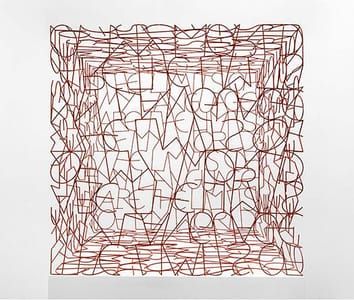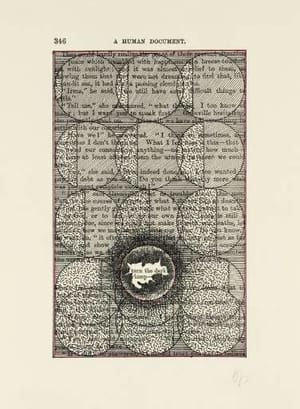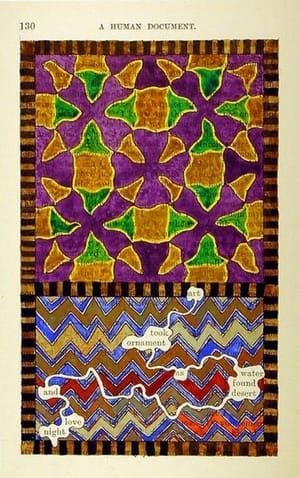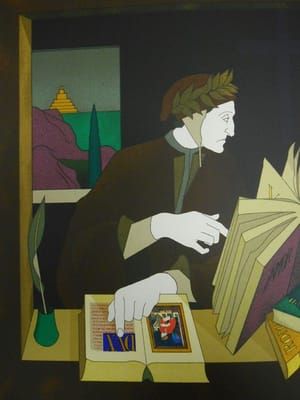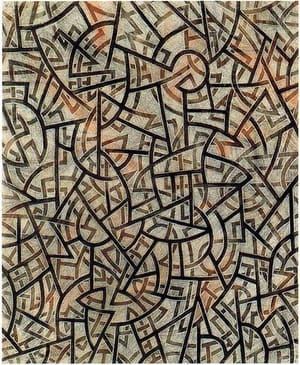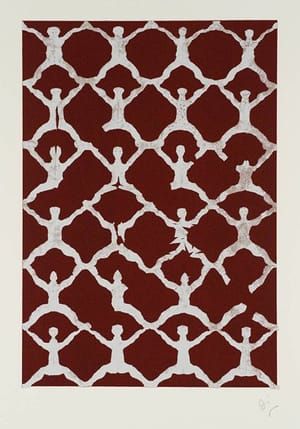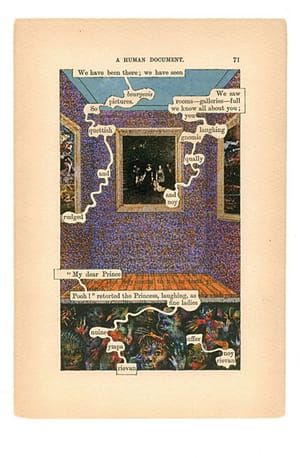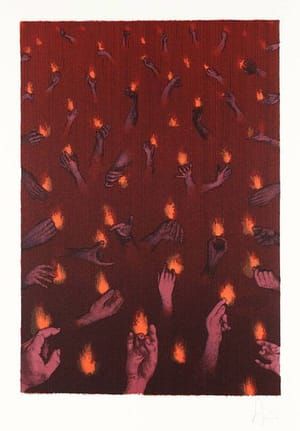
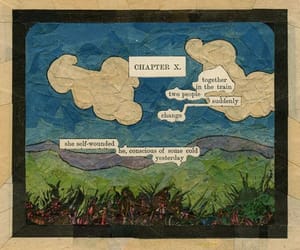
Together in the Train, Humument Fragment, 2005
Tom Phillips
These Humument Fragments are original collage works made for an exhibition in New York, all the collage material came from vintage American comics such DC’s 1975 Rima Jungle Girl.
(http://www.tomphillips.co.uk/works/collage/item/5479-you-have-to-neglect-neglect#)
The textual element permeating Phillips' work is demonstrated by his pioneering book A Humument. From A Human Document, a Victorian novel by WH Mallock bought for three pence in the mid sixties, Phillips has created countless narratives from the text replacing unwanted words with an astonishingly varied visual commentary. Dante in his Study is one of the illustrations to his own translation of Dante's Inferno. Both are fusions of text and image reminiscent of the tradition of illuminated manuscripts. Phillips' interest in words can be further seen in such sculptures as Wittgenstein's Dilemma ("The Limits of My Language are the Limits of My World") and in the tapestries made for the St Catherine's College Dining Hall.
(http://www.ashmolean.org/ash/exhibitions/exh085.html)
British artist Tom Phillips released the first edition of A Humument in 1970. To create this stunning book, Phillips illustrated and/or collaged each page of a found Victorian text – WH Mallock’s A Human Document – leaving parts of the original text exposed and uncovering a new story line with a new protagonist named Bill Toge, whose name appears only when the word “together” or “altogether” appears in Mallock’s original text. Of the text and his project, Phillips says,”It is a forgotten Victorian novel found by chance …I plundered, mined, and undermined its text to make it yield the ghosts of other possible stories, scenes, poems, erotic incidents, and surrealist catastrophes which seemed to lurk within its wall of words. As I worked on it, I replaced the text I’d stripped away with visual images of all kinds. It began to tell and depict, among other memories, dreams, and reflections, the sad story of Bill Toge, one of love’s casualties.”
Over the years, Phillips has revised and replaced pages of the text, resulting in updated editions. The most recent 5th edition was published in 2012. In 2010, A Humument made its digital debut as an app for the iPad and iPhone. Assisting in its develop, Phillips is very pleased with his work’s transition to the digital realm. For Phillips, a bright screen enhances his illustrations, lending them a glow his pens and paints couldn’t achieve, “almost like church windows at times.” After Phillips started working on the book in the 60s, he dreamed that it could one day be used as an oracle. Forty years of technology later, Phillips’ dream has been realized, and he’s become his own consumer: “Each night after midnight I consult, somewhat furtively (even though alone), the Oracle I have made. I’m often surprised by pages made long ago and almost forgotten, as well as by the sometimes uncanny predictions they offer their maker.”
(http://beautifuldecay.com/2014/07/25/tom-phillips-humument-ongoing-transformation-forgotten-victorian-text-colorfully-illustrated-digital-oracle/)
A Humument has been a work in progress since 1966 when artist Tom Phillips set himself a task: to find a second-hand book for threepence and alter every page by painting, collage and cut-up techniques to create an entirely new version. The book he found was an 1892 Victorian obscurity A Human Document by W.H. Mallock and Phillips transformed it into A Humument. The first version was printed by the Tetrad press in 1973, and Phillips has continued to transform it, revise it and develop it ever since.
A section of the website brings together a wealth of information on this Gesamtkunstwerk which you are invited to explore by clicking the links on the left of this page.
Alternatively, you can use the player below to listen to the artist-author reading the whole of the sixth and final version of his text.
(http://www.tomphillips.co.uk/humument)
Uploaded on Jun 22, 2017 by Suzan Hamer
Tom Phillips
artistArthur
Wait what?

